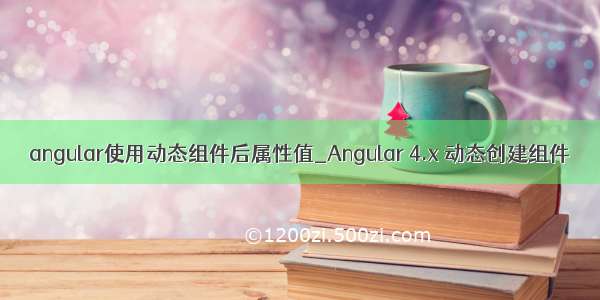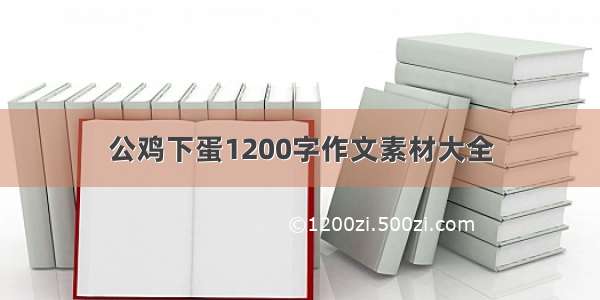
动态创建组件
这篇文章我们将介绍在 Angular 中如何动态创建组件。
定义 AlertComponent 组件
首先,我们需要定义一个组件。
exe-ponent.ts
import { Component, Input } from '@angular/core';
@Component({
selector: "exe-alert",
template: `
Alert {{type}}
`,
})
export class AlertComponent {
@Input() type: string = "success";
}
上面代码中,我们定义了一个简单的 alert 组件,该组件有一个输入属性 type ,用于让用户自定义提示的类型。我们的自定义组件最终是一个实际的 DOM 元素,因此如果我们需要在页面中插入该元素,我们就需要考虑在哪里放置该元素。
创建组件容器
在 Angular 中放置组件的地方称为 container 容器。接下来,我们将在 exe-app 组件中创建一个模板元素,此外我们使用模板变量的语法,声明一个模板变量。接下来模板元素 将会作为我们的组件容器,具体示例如下:
ponent.ts
import { Component } from '@angular/core';
@Component({
selector: 'exe-app',
template: `
`
})
export class AppComponent { }
友情提示:容器可以是任意的 DOM 元素或组件。
在 AppComponent 组件中,我们可以通过 ViewChild 装饰器来获取视图中的模板元素,如果没有指定第二个查询参数,则默认返回的组件实例或相应的 DOM 元素,但这个示例中,我们需要获取 ViewContainerRef 实例。
ViewContainerRef 用于表示一个视图容器,可添加一个或多个视图。通过 ViewContainerRef 实例,我们可以基于 TemplateRef 实例创建内嵌视图,并能指定内嵌视图的插入位置,也可以方便对视图容器中已有的视图进行管理。简而言之,ViewContainerRef 的主要作用是创建和管理内嵌视图或组件视图。
根据以上需求,更新后的代码如下:
import { Component, ViewChild, ViewContainerRef } from '@angular/core';
@Component({
selector: 'exe-app',
template: `
`
})
export class AppComponent {
@ViewChild("alertContainer", { read: ViewContainerRef }) container: ViewContainerRef;
}
动态创建组件
接下来,在 AppComponent 组件中,我们来添加两个按钮,用于创建 AlertComponent 组件。
import { Component, ViewChild, ViewContainerRef } from '@angular/core';
@Component({
selector: 'exe-app',
template: `
Create success alert
Create danger alert
`
})
export class AppComponent {
@ViewChild("alertContainer", { read: ViewContainerRef }) container: ViewContainerRef;
}
在我们定义 createComponent() 方法前,我们需要注入 ComponentFactoryResolver 服务对象。该 ComponentFactoryResolver 服务对象中,提供了一个很重要的方法 - resolveComponentFactory() ,该方法接收一个组件类作为参数,并返回 ComponentFactory 。
ComponentFactoryResolver 抽象类:
export abstract class ComponentFactoryResolver {
static NULL: ComponentFactoryResolver = new _NullComponentFactoryResolver();
abstract resolveComponentFactory(component: Type): ComponentFactory;
}
在 AppComponent 组件构造函数中,注入 ComponentFactoryResolver 服务:
constructor(private resolver: ComponentFactoryResolver) {}
接下来我们再来看一下 ComponentFactory 抽象类:
export abstract class ComponentFactory {
abstract get selector(): string;
abstract get componentType(): Type;
// selector for all elements in the component.
abstract get ngContentSelectors(): string[];
// the inputs of the component.
abstract get inputs(): {propName: string, templateName: string}[];
// the outputs of the component.
abstract get outputs(): {propName: string, templateName: string}[];
// Creates a new component.
abstract create(
injector: Injector, projectableNodes?: any[][], rootSelectorOrNode?: string|any,
ngModule?: NgModuleRef): ComponentRef;
}
通过观察 ComponentFactory 抽象类,我们知道可以通过调用 ComponentFactory 实例的 create() 方法,来创建组件。介绍完上面的知识,我们来实现 AppComponent 组件的 createComponent() 方法:
createComponent(type) {
this.container.clear();
const factory: ComponentFactory =
this.resolver.resolveComponentFactory(AlertComponent);
ponentRef: ComponentRef = this.container.createComponent(factory);
}
接下来我们来分段解释一下上面的代码。
this.container.clear();
每次我们需要创建组件时,我们需要删除之前的视图,否则组件容器中会出现多个视图 (如果允许多个组件的话,就不需要执行清除操作 )。
const factory: ComponentFactory = this.resolver.resolveComponentFactory(AlertComponent);
正如我们之前所说的,resolveComponentFactory() 方法接受一个组件并返回如何创建组件的 ComponentFactory 实例。
ponentRef: ComponentRef = this.container.createComponent(factory);
在上面代码中,我们调用容器的 createComponent() 方法,该方法内部将调用 ComponentFactory 实例的 create() 方法创建对应的组件,并将组件添加到我们的容器。
现在我们已经能获取新组件的引用,即可以我们可以设置组件的输入类型:
ponentRef.instance.type = type;
同样我们也可以订阅组件的输出属性,具体如下:
ponentRef.instance.output.subscribe(event => console.log(event));
另外不能忘记销毁组件:
ngOnDestroy() {
ponentRef.destroy();
}
最后我们需要将动态组件添加到 NgModule 的 entryComponents 属性中:
@NgModule({
...,
declarations: [AppComponent, AlertComponent],
bootstrap: [AppComponent],
entryComponents: [AlertComponent],
})
export class AppModule { }
完整示例
exe-ponent.ts
import { Component, Input, Output, EventEmitter } from '@angular/core';
@Component({
selector: "exe-alert",
template: `
Alert {{type}}
`,
})
export class AlertComponent {
@Input() type: string = "success";
@Output() output = new EventEmitter();
}
ponent.ts
import {
Component, ViewChild, ViewContainerRef, ComponentFactory,
ComponentRef, ComponentFactoryResolver, OnDestroy
} from '@angular/core';
import { AlertComponent } from './exe-ponent';
@Component({
selector: 'exe-app',
template: `
Create success alert
Create danger alert
`
})
export class AppComponent implements OnDestroy {
componentRef: ComponentRef;
@ViewChild("alertContainer", { read: ViewContainerRef }) container: ViewContainerRef;
constructor(private resolver: ComponentFactoryResolver) { }
createComponent(type: string) {
this.container.clear();
const factory: ComponentFactory =
this.resolver.resolveComponentFactory(AlertComponent);
ponentRef = this.container.createComponent(factory);
ponentRef.instance.type = type;
ponentRef.instance.output.subscribe((msg: string) => console.log(msg));
}
ngOnDestroy() {
ponentRef.destroy()
}
}
app.module.ts
import { NgModule, CUSTOM_ELEMENTS_SCHEMA } from '@angular/core';
import { BrowserModule } from '@angular/platform-browser';
import { AppComponent } from './ponent';
import { AlertComponent } from './exe-ponent';
@NgModule({
imports: [BrowserModule],
declarations: [AppComponent, AlertComponent],
bootstrap: [AppComponent],
entryComponents: [AlertComponent],
schemas: [CUSTOM_ELEMENTS_SCHEMA]
})
export class AppModule { }
总结
动态加载组件的流程:
获取装载动态组件的容器
在组件类的构造函数中,注入 ComponentFactoryResolver 对象
调用 ComponentFactoryResolver 对象的 resolveComponentFactory() 方法创建 ComponentFactory 对象
调用组件容器对象的 createComponent() 方法创建组件并自动添加动态组件到组件容器中
基于返回的 ComponentRef 组件实例,配置组件相关属性 (可选)
在模块 Metadata 对象的 entryComponents 属性中添加动态组件
declarations - 用于指定属于该模块的指令和管道列表
entryComponents - 用于指定在模块定义时,需要编译的组件列表。对于列表中声明的每个组件,Angular 将会创建对应的一个 ComponentFactory 对象,并将其存储在 ComponentFactoryResolver 对象中
我有话说
与 有什么区别?
通常情况下,当我们使用结构指令时,我们需要添加额外的标签来封装内容,如使用 *ngIf 指令:
Div one
Div two
上面示例中,我们在 section 标签上应用了 ngIf 指令,从而实现 section 标签内容的动态显示。这种方式有个问题是,我们必须添加额外的 DOM 元素。要解决该问题,我们可以使用 的标准语法 (非*ngIf语法糖):
Div one
Div two
问题是解决了但我们不再使用 * 语法糖语法,这样会导致我们代码的不统一。虽然解决了问题,但又带来了新问题。那我们还有其它的方案么?答案是有的,我们可以使用 ng-container 指令。
是一个逻辑容器,可用于对节点进行分组,但不作为 DOM 树中的节点,它将被渲染为 HTML中的 comment 元素。使用 的示例如下:
Div one
Div two
有时我们需要根据 switch 语句,动态显示文本,这时我们需要添加一个额外的标签如 ,具体示例如下:
Text one
Text two
针对这种情况,理论上我们是不需要添加额外的 标签,这时我们可以使用 ng-container 来解决这个问题:
Text one
Text two
介绍完 ng-container 指令,我们来分析一下它跟 ng-template 指令有什么区别?我们先看以下示例:
In template, no attributes.
In ng-container, no attributes.
以上代码运行后,浏览器中输出结果是:
In ng-container, no attributes.
即 中的内容不会显示。当在上面的模板中添加 ngIf 指令:
ngIf with a template.
ngIf with an ng-container.
以上代码运行后,浏览器中输出结果是:
ngIf with a template.
ngIf with an ng-container.
现在我们来总结一下 和 的区别:
:使用 * 语法糖的结构指令,最终都会转换为 或 模板指令,模板内的内容如果不进行处理,是不会在页面中显示的。
:是一个逻辑容器,可用于对节点进行分组,但不作为 DOM 树中的节点,它将被渲染为 HTML中的 comment 元素,它可用于避免添加额外的元素来使用结构指令。
最后再来看一个 的使用示例:
模板定义
Title
Content渲染结果
Title
ContentTemplateRef 与 ViewContainerRef 有什么作用?
TemplateRef
用于表示内嵌的 template 模板元素,通过 TemplateRef 实例,我们可以方便创建内嵌视图(Embedded Views),且可以轻松地访问到通过 ElementRef 封装后的 nativeElement。需要注意的是组件视图中的 template 模板元素,经过渲染后会被替换成 comment 元素。
ViewContainerRef
用于表示一个视图容器,可添加一个或多个视图。通 ViewContainerRef 实例,我们可以基于 TemplateRef 实例创建内嵌视图,并能指定内嵌视图的插入位置,也可以方便对视图容器中已有的视图进行管理。简而言之,ViewContainerRef 的主要作用是创建和管理内嵌视图或组件视图。(本示例就是通过 ViewContainerRef 对象提供的 API来动态地创建组件视图)。
ViewChild 装饰器还支持哪些查询条件?
ViewChild 装饰器用于获取模板视图中的元素,它支持 Type 类型或 string 类型的选择器,同时支持设置 read 查询条件,以获取不同类型的实例。
export interface ViewChildDecorator {
// Type类型:@ViewChild(ChildComponent)
// string类型:@ViewChild('tpl', { read: ViewContainerRef })
(selector: Type|Function|string, {read}?: {read?: any}): any;
new (selector: Type|Function|string,
{read}?: {read?: any}): ViewChild;
}
参考资源














